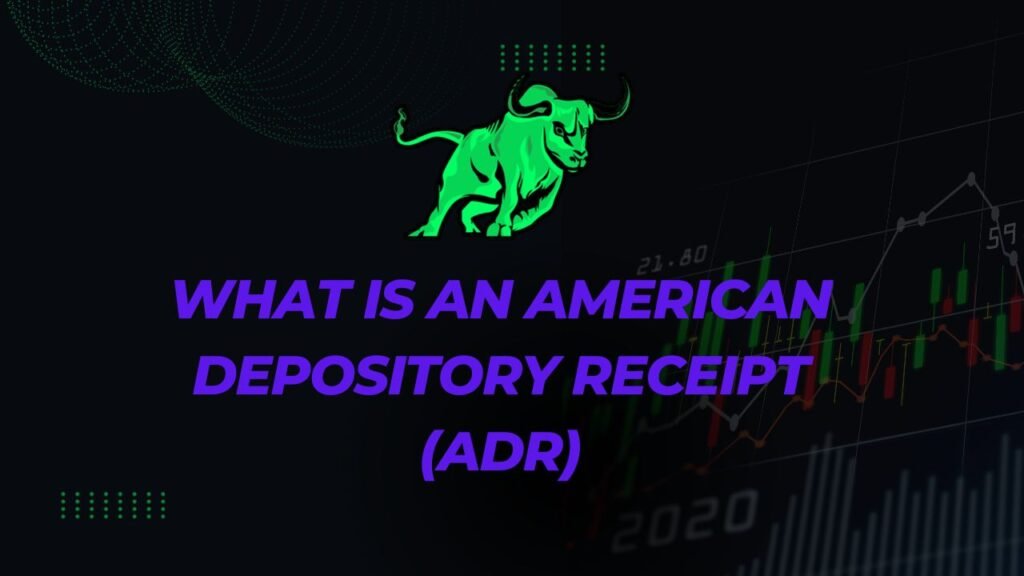
In the vast world of investing, you may come across various terms and concepts that might seem complex at first glance. One such term is American Depository Receipt (ADR). In this article, we’ll unravel the mysteries surrounding ADRs, making this financial instrument easy to understand, even for beginners.
A Glimpse into the ADR Universe
Imagine you’re an investor interested in buying shares of a foreign company listed on a stock exchange halfway across the globe. While the idea is intriguing, the practicality of it can be challenging due to currency exchange, international regulations, and time zone differences. This is where ADRs come into play.
The ADR Bridge
An ADR serves as a bridge between investors in the United States and foreign companies’ stocks. Here’s how it works:
- Foreign Company: Let’s say there’s a prominent European tech company, TechX, based in Germany, and its shares are listed on the Frankfurt Stock Exchange. As a U.S. investor, buying shares directly can be complicated.
- U.S. Depository Bank: To simplify this process, a U.S. depository bank, such as Citibank or JPMorgan, purchases a significant number of TechX’s shares on the Frankfurt Stock Exchange.
- ADRs Issued: After acquiring these shares, the U.S. depository bank issues American Depository Receipts (ADRs) representing ownership in TechX. These ADRs are then traded on U.S. stock exchanges like the NYSE or NASDAQ.
- Accessible Investment: As an investor in the U.S., you can easily purchase ADRs of TechX on U.S. stock exchanges, simplifying your investment in the foreign company.
Types of ADRs
ADRs come in various types, each catering to different investor preferences:
- Sponsored ADRs: These are created with the cooperation of the foreign company. They provide detailed financial information and are subject to U.S. Securities and Exchange Commission (SEC) regulations.
- Unsponsored ADRs: These are not officially endorsed by the foreign company. They tend to have less information available and fewer regulatory requirements.
- Level I, II, and III ADRs: These levels represent the extent of compliance with U.S. regulations. Level III ADRs have the highest level of compliance and reporting requirements.
Advantages of ADRs
Why should you consider ADRs in your investment portfolio? Here are some compelling advantages:
- Global Diversification: ADRs allow you to diversify your investments across international markets without the complexities of foreign exchanges.
- Currency Convenience: Transactions are conducted in U.S. dollars, eliminating the need for currency conversion.
- Access to Global Brands: You can invest in well-known international companies that might not have shares listed on U.S. exchanges.
FAQs About ADRs
Q: Are ADRs risk-free investments? A: No, like any investment, ADRs carry risks, including market volatility and currency exchange rate fluctuations.
Q: Can I receive dividends from ADRs? A: Yes, ADR holders are typically eligible to receive dividends, which are paid in U.S. dollars.
Q: How do I buy ADRs? A: You can purchase ADRs through your brokerage account, just like you would with domestic stocks.
Conclusion: Navigating the Global Investment Landscape
In conclusion, American Depository Receipts (ADRs) provide a convenient and accessible way for U.S. investors to participate in international markets. They bridge the gap between domestic investors and foreign companies, offering a window to the global investment landscape.
As you explore the world of investing, consider adding ADRs to your toolkit. They offer the potential for global diversification, exposure to renowned international brands, and the convenience of transacting in U.S. dollars.
Whether you’re a seasoned investor or just starting, ADRs can be a valuable addition to your investment strategy, helping you navigate the global financial markets with ease.